In the past, the primary cause for unfinished buildings was mostly the idealistic but unrealistic planning and setting of unachievable goals. There had also been the unforeseen factors like the natural factors beyond human control which hampered the completion of some projects. There are many unfinished buildings in Egypt, and there are said to be two assignable causes; firstly, the Islamic law prohibited borrowing, and secondly, the buildings were taxed only after completion. In modern times, the causes for leaving the buildings unfinished are: the funding shortage, lawsuits, death of the founder builders followed by the disinterest of the successors, or a changed scenario rendering the building a futile project. Housing projects have been especially prone to criminal neglect by dishonest builders whose primary aim was to collect down payments from investors and then to disappear from the scene leaving them entangled in an endless process of trying to recover their investments. With the increasing awareness about the environmental issues on the part of the stakeholders and the interference of environmental activists, some projects have been stopped before they were completed.
1. Szkieletor
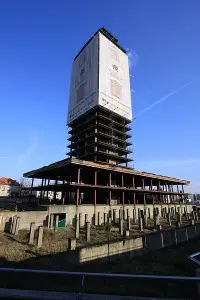
Szkieletor was a 92-meter high-rise building in Krakow, Poland. It is located in the vicinity of Mogilskie around the suburbs of the Cracow University of Economics. It is the tallest building in Krakow. Its construction was started in 1975 and stopped permanently in 1981 on account of lack of finances, political unrest, and imposition of martial law in Poland. It was intended to serve as the regional office of the Main Technical Organization. It was officially to be named as ‘Not Tower,’ but was better known as ‘Szkieletor’ after the villain Skeletor in the cartoon He-Man and the Masters of the Universe which was popular in Poland at that time. Many investors have shown interest in its completion, but they have been discouraged by the prohibitive estimates and the legal complications in the ownership of the land on which the building was constructed. Currently, the building is used only for displaying billboards for commercial advertisements.
2. The Ryugyong Hotel
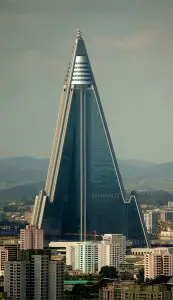
The Ryugyong Hotel, also known as 105 Building, after the number of floors in the building, is a pyramidal skyscraper in Pyongyang, North Korea. It was originally intended to be a hotel and was scheduled to be completed prior to the commencement of the 13th World Festival of Youth and Students in June, 1989. The building is at an elevation of 330 meters and stands out prominently forming the most visible milestone in the skyline of Pyongyang. Its construction started in 1987, but after the economic crisis in North Korea culminating from the fall of the Soviet Union, it was stopped in 1992. It is the 47th tallest building in the world and ranks 5th with the most numbers of floors. It is now scheduled to be completed in August, 2013.
3. The Palace of Whitehall
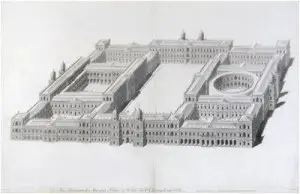
The Palace of Whitehall was named after the finely dressed white stone used in its masonry, and the term ‘Whitehall’ has been first recorded in 1532. The palace is bordered by Northumberland Avenue in the north, by Downing Street in the South, Horse Garden Road in the west and by the river. Many alterations and expansions have been made in the palace from time to time. Therefore, being more than a unit, it looked like a small town. By 1650, the palace, comprising 1500 rooms, was the largest building in England. It had been the residence of the English monarchs from 1530 until 1698 when it was destroyed by a fire. According to a diary written by John Evelyn, ‘Whitehall burnt! Nothing but walls and ruins left.’ The only part of the building which is intact is the Banquet House.
4. The Super Power Building
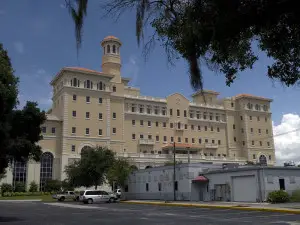
The Super Power Building is a Church of Scientology located in Clearwater, Florida, covering an area of 11,800 square meters. The building is the largest in Clearwater. The original estimate was $24 million, which doubled, crossing $50 million, and it was on account of this unexpected rise that the construction which started in 1998 came to a halt in 2003. The building plan included a 15-story tower topped with a bronze Scientology Cross. The building is planned to include a grand lobby, a museum, a bookstore, a library, hundreds of study rooms, with the total number of rooms being 889 and a 1,140 seat dining room and 42 washrooms. The concept was visualized by the founder L. Ron Hubbard as: “A super fantastic but confidential series of rundowns that can be done on anybody.’ The building will contain NASA technology used for training astronauts to enhance an individual’s five senses.
5. The People’s Plaza
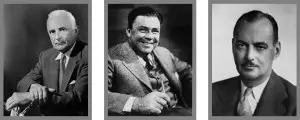
The People’s Plaza was designed by Skidmore, Owings, and Merril and, according to the original plan, it was to include a 79-story office tower, a 24-story hotel, and a 7-story shopping plaza. The site was occupied by Selangor in 1929. The club was completely cleared in 1990 when the construction of the People’s Plaza was initiated. The construction, however, stopped in 1997 on account of the Asian Financial Crisis. As of December, 2012, the Kuala Lumpur Mayor Ahmed Phesal Talib has revealed that arbitration is going on with the original contractor with RHB bank acting as arbitrator.
6. Westminster Cathedral
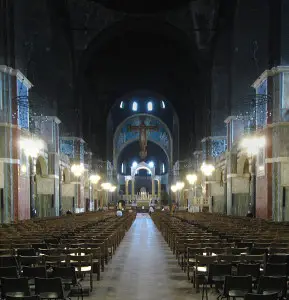
Westminster Cathedral is located in London and is the main Church of Catholics in Wales and England. The site of the cathedral originally belonged to the Benedictine monks who established Westminster Abbey in its vicinity. This site was purchased by the Archdiocese of Westminster in 1885. It is the seat of the Archbishop of Westminster. Construction of the cathedral started in 1895, and it was opened in 1903. Its interior decoration was stopped soon after its start on account of financial constraints and still needs to be completed. The cathedral has been visited by Her Majesty the Queen, His Holiness Pope John Paul II, and His Holiness Pope Benedict XVI.
7. The Herrenchiemsee Palace
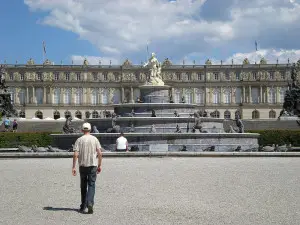
The Herrenchiemsee Palace, also known as the New Palace, is located in Herreninsel Island of Chiemsee, Bavaria, Germany. It is the largest palace of King Ludwig II of Bavaria. The unfinished New Palace was designed by Christian Jank, Franz Seitz, and Georg von Dollmann. It was built between 1878 and 1885 at a heavy cost. An estimate equaled this cost as of March, 2007 as $125,400,000. Its construction was stopped after the death of King Ludwig in 1886, and it was opened to the public. Its almost completed north wing was demolished in 1907. The Crown Prince Rupprecht gave the palace to the State of Bavaria.
8. BasÃlica y Templo Expiatorio de la Sagrada Familia

BasÃlica y Templo Expiatorio de la Sagrada Familia, better known as Sagrada Familia, is a big, Roman Catholic Church. It is located in Barcelona, Catalonia, Spain. It was designed by Antoni Gaudi, and its construction started in 1882. It was proclaimed a minor basilica by Pope Benedict XVI. Although it is incomplete, yet it is a UNESCO World Heritage Site. Since the construction depended upon donations only, its construction progress was slow and almost stopped during the Spanish Civil War. Its construction resumed in 1950, and it is estimated to be completed by the year 2026.
9. The New Zealand Parliament Buildings
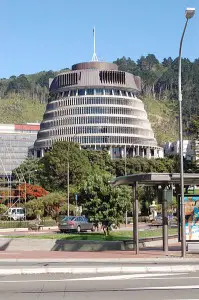
The New Zealand Parliament Buildings were constructed to replace the former Wooden Parliament House which was destroyed by a fire. Joseph Ward, the Prime Minister, announced a design competition. And out of 33 entries, Architect John Campbell’s design was approved. Inspite of the financial constraints, its construction while leaving out the ornamentation, was started by the orders of the Prime Minister William Massey in 1914. Construction was almost stopped during World War I. In 1918, the MPs moved into the unfinished building. After its strengthening, it was officially opened by Queen Elizabeth in 1995.
10. Neuschwanstein Castle
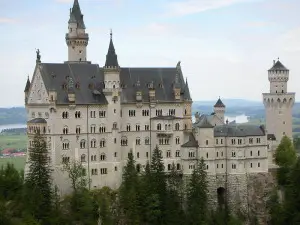
Neuschwanstein Castle is a 19th century Romanesque building. It is located in a hilly tract above the village Hohenschwangau near Fussen in southwest Bavaria, Germany. The palace was made as King Ludwig’s rest house. After the death of King Ludwig in 1886, the palace was opened to the public. More than 60 million people have visited the palace since then. About 6,000 people visit it daily in the summer. It has appeared prominently in several movies and has appeared as Disneyland’s Sleeping Beauty’s Castle. Had it been completed, there would have been 200 interior rooms instead of the intimate 15 rooms only.
Conclusion:
Once a ship has drifted onto a sandy beach, it is only too expensive an affair to try dragging it back to the deep waters and set it afloat. They are more often destined for destruction only. Unfinished buildings, too, are similarly difficult to be completed, renovated, or reconstructed after a prolonged break in construction. History is that such buildings have been left unattended like a question mark for future generations.










Leave a Reply